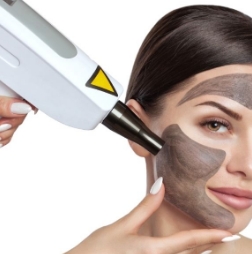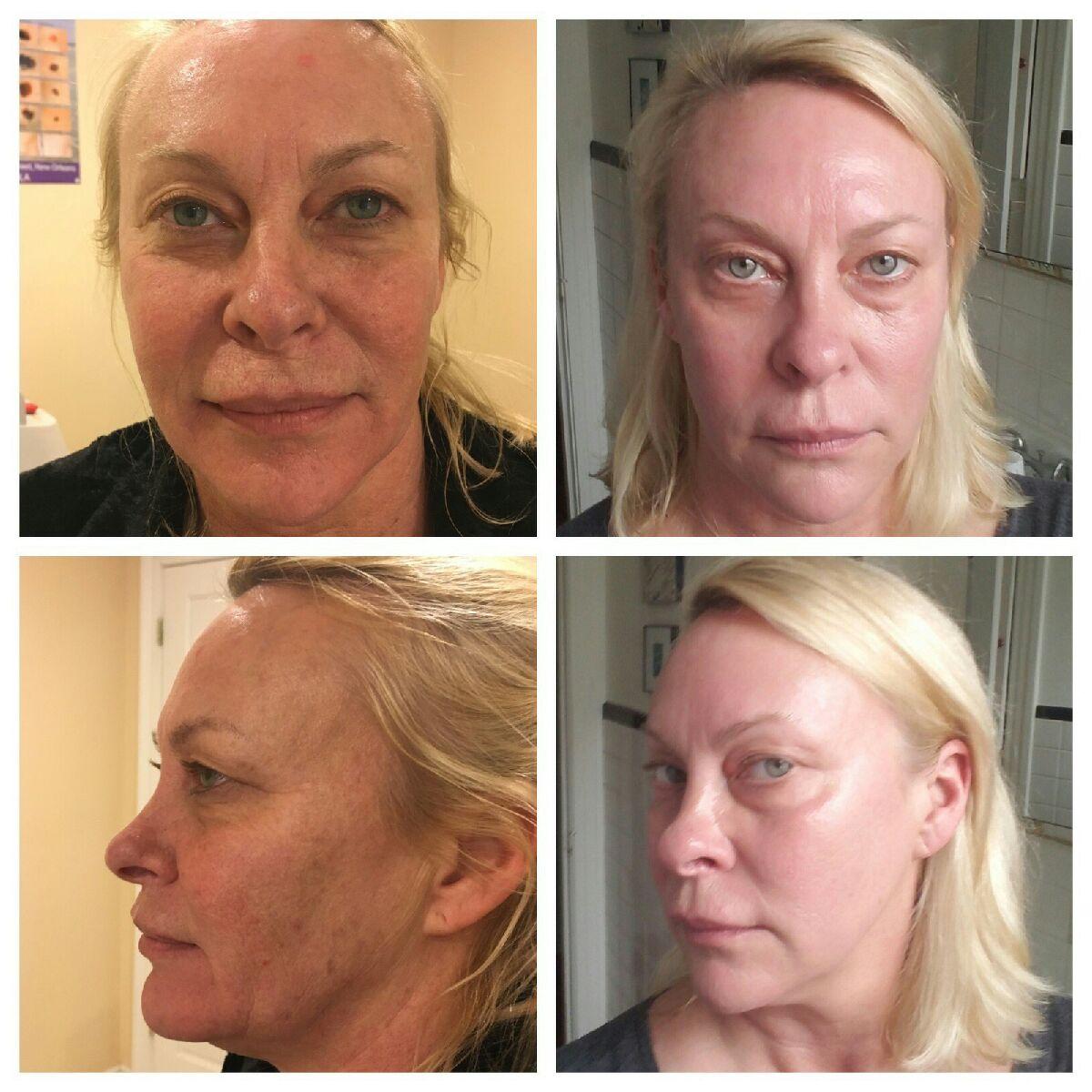Laser Skin Resurfacing Erbium Yag
Laser Skin Resurfacing - Erbium Yag
See more
Erbium:YAG uses a 2940nm wavelength for skin resurfacing.
The Erbium:YAG is fully ablative and customizable, having the ability to resurface skin from 10 to 100 microns.
Because water is such a critical component in the epidermal and dermal tissue, the 2940 nm wavelength produced by Erbium:YAG lasers is capable of rapidly vaporizing water residing in the skin. This unique wavelength delivers an almost instant skin ablation while limiting heat damage in the surrounding area. Unlike CO2, Erbium is a more superficial skin resurfacing tool for polishing the skin. The Erbium:YAG laser is capable of achieving superior resurfacing results, while offering many advantages to the patient, e.g., reduced anesthetic requirements, shorter healing time, reduced erythema, less risk of pigmentary change, and more flexibility for facial skin resurfacing.
What does it do?
See more
Erbium:YAG laser skin resurfacing is an effective technique for minimally invasive and effective management of many cutaneous conditions and lesions. Its main indications include treatment of photoaging, rhytids, wrinkles, and solitary benign and malignant cutaneous lesions.
Pre-treatment
See more
Cannot be performed on tanned skin, please stay out of the sun. Avoid direct exposure to the sun / tanning beds 4 weeks prior to treatment. Wear broad spectrum SPF, pretreat if prone to cold sores.
Post-treatment
See more
Clean the skin with a gentle cleanser and apply recovery balm several times a day until evidence of dryness, blistering, or swelling has disappeared. Can be a little temperature sensitive. Avoid exfoliants, scrubbing, chlorine, hot tubs, and swimming pools while healing.
Will I need to take time off?
See more
Recovery times will vary depending on your treatment. Skin should start sloughing off 2-3 days after the treatment, a rosy “glow” can remain for several weeks. Make-up may be applied to minimize redness. Generally, 2-3 days off should be sufficient, 3-5 days for more aggressive treatments.
When will I see results? How long do they last?
See more
The top layer of skin will re-grow and can be covered with makeup within about one week, at which time you will see noticeable improvements in your skin’s texture, tone, and wrinkle appearance. Deeper laser treatments also stimulate the growth of new collagen over the next four to six months.
Are there any side effects?
See more
Mild complications of Erbium:YAG laser resurfacing include milia, acne exacerbation, contact dermatitis, or perioral dermatitis. Moderate complications include prolonged erythema, transient posttreatment hyperpigmentation, and delayed hypopigmentation.
Who is a good candidate?
See more
Recommended 6-10 treatments.
How many treatments will I need?
See more
Patients with realistic expectations and mild to moderate skin conditions. If you have fine lines or wrinkles around your eyes or mouth or on your forehead, shallow scars from acne, or non-responsive skin after a facelift, then you may be a good candidate for Erbium Laser Resurfacing.
Does it help anti-aging / stimulate collagen?
See more
Ablative and non-ablative Erbium laser resurfacing stimulate collagen reorganization and fibroblast activation in photoaged skin. Ablative resurfacing, as on the Spectrum laser, will yield more significant results in a shorter period of time.

Carbon Facial using Erbium Yag

Laser Skin Resurfacing - Erbium Yag
Erbium:YAG uses a 2940nm wavelength for skin resurfacing.
The Erbium:YAG is fully ablative and customizable, having the ability to resurface skin from 10 to 100 microns.
Because water is such a critical component in the epidermal and dermal tissue, the 2940 nm wavelength produced by Erbium:YAG lasers is capable of rapidly vaporizing water residing in the skin. This unique wavelength delivers an almost instant skin ablation while limiting heat damage in the surrounding area. Unlike CO2, Erbium is a more superficial skin resurfacing tool for polishing the skin. The Erbium:YAG laser is capable of achieving superior resurfacing results, while offering many advantages to the patient, e.g., reduced anesthetic requirements, shorter healing time, reduced erythema, less risk of pigmentary change, and more flexibility for facial skin resurfacing.
